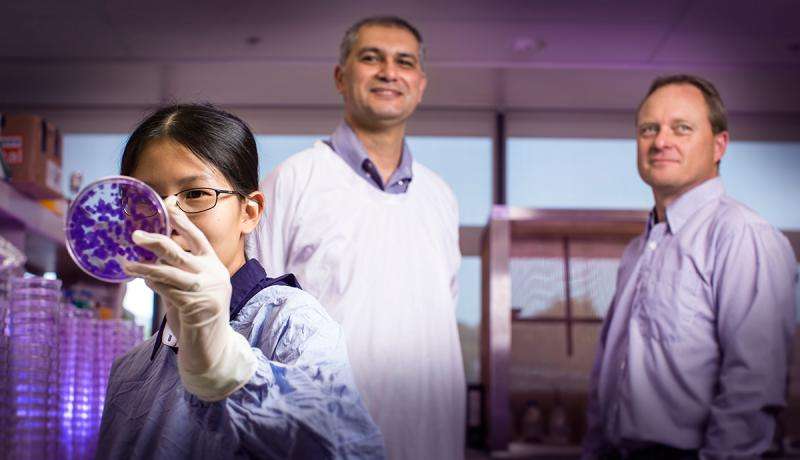New brain cancer treatment twice as effective

Researchers develop new therapy to treat some of the most aggressive malignant brain tumours.
A new three-pronged therapy to treat some of the most aggressive malignant brain tumours is twice as effective than current treatments, researchers from UOW have found.
The therapy, developed by scientists at UOW's Centre for Medical Radiation Physics (CMRP) and recently published in journal Physics in Medicine and Biology, combines radiation, chemotherapy and a radio-sensitising drug in vitro. It has been shown to more than double tumour cell death compared to a radiation-only control in high-grade glioma brain tumours.
On average, approximately 1600 brain cancers are diagnosed each year in Australia; that is roughly one person diagnosed every five hours.
Gliomas are the most common and aggressive type of brain tumour. While new imaging techniques have made the early diagnosis possible, the treatment of high-grade gliomas remains a major challenge for clinicians as they are resistant to radiotherapy and chemotherapy often fails because of inadequate drug delivery inside the tumour.
Lead author of the study Dr Sianne Oktaria (pictured above with Dr Moeava Tehei and Associate Professor Michael Lerch), from CMRP, said a cure for high-grade glioma brain tumours is desperately needed.
"In Australia, the five-year survival rates for brain cancer are low compared to other cancers. Radiotherapy, chemotherapy and surgery act only as palliative treatment options for these patients and we haven't seen any improvements in treatment in the past 30 years."
To improve outcomes for these patients, the UOW researchers embarked on a study to find the perfect dose of radiation and chemo that would kill tumours while minimising the effect on healthy tissue.
Dr Oktaria said her team combined two types of drugs prior to applying radiation – a radiosensitiser (BrUdR), which makes the tumour more sensitive to the radiation, and a chemo drug (MTX), which helps to block the growth of tumour cells after the radiation has been delivered.
"The combination of drugs and radiation enables more radiation dose to reach the target. This means that a much lower dose, 2.3 times less, can be used to kill 90 per cent of the tumour cells."
"This is expected to improve local tumour control while reducing adverse effects caused by the exposure of healthy brain tissue to radiation, which can impair brain function and cause problems with memory and speech."
The research, conducted at the Illawarra Health and Medical Research Institute at UOW and the Prince of Wales Hospital in Sydney, also proved promising as it uses a conventional x-ray machine, meaning hospitals do not need to be provided with new equipment to utilise the treatment.
Co-author Dr Stéphanie Corde, medical physicist at CMRP and Prince of Wales Hospital in Sydney, said the results were extraordinary.
"We were extremely pleased with these results that are unprecedented in vitro on an extremely aggressive glioma cell line."
Dr Oktaria, whose mother passed away from ovarian cancer, said if the treatment is shown to work in small animal models (which the team plans to start working on next year), it could be used for many different kinds of cancer in the future.
"If this treatment can overcome gliomas, one of the most aggressive cancers, it can certainly also be applied for other types of cancer."
The research team on this project included Dr Moeava Tehei, Associate Professor Michael Lerch, Professor Anatoly Rozenfeld, Dr Konstantin Konstantinov and Dr Stephanie Corde.
More information: Sianne Oktaria et al. Indirect radio-chemo-beta therapy: a targeted approach to increase biological efficiency of x-rays based on energy, Physics in Medicine and Biology (2015). DOI: 10.1088/0031-9155/60/20/7847

















